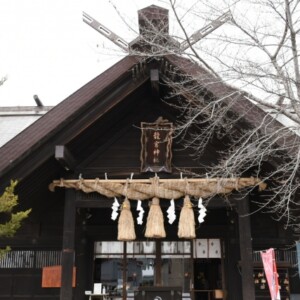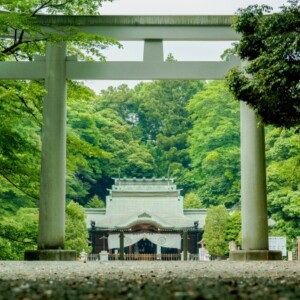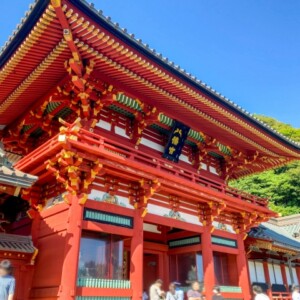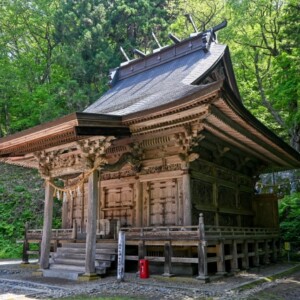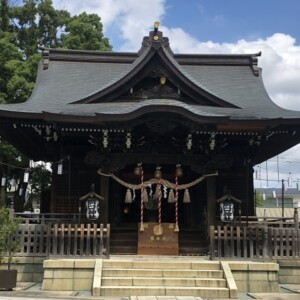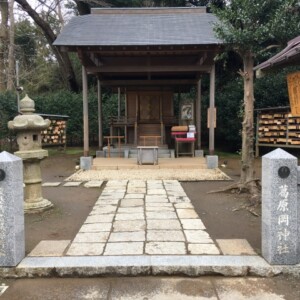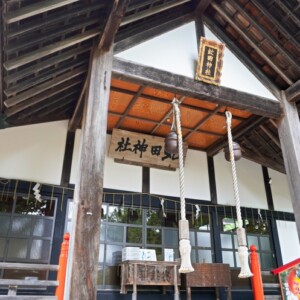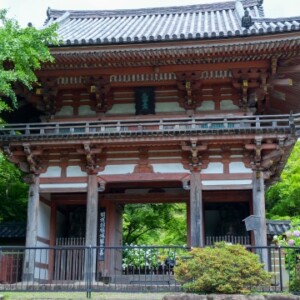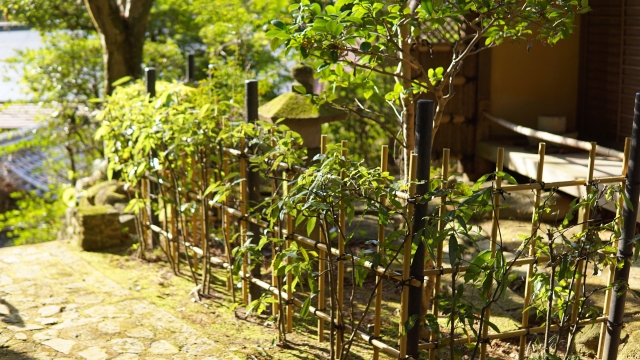
Kusunoki Kannon-ji Temple|A Complete Guide to the Ancient Temple Related to Lady Masanari Kusunoki and its Beautiful Autumn Foliage Garden
Kusuha An Kannonji Temple, located in the quiet Gananbi area of Tondabayashi City, Osaka Prefecture, is an old temple with a rich history founded by Hisako, the wife of Masanari Kusunoki, a hero of the Nanbokucho Period (1644-1644). Surrounded by beautiful nature in each of the four seasons, the temple has been loved by many people as a hidden beauty spot, especially in the fall when the autumn leaves are the most beautiful in the city.
Outline and basic information about Kusumigaseki Ancient Kannon Temple
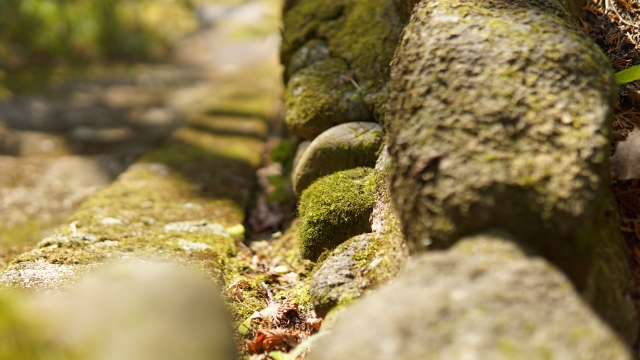
Nampian Kannonji Temple is a temple of the Myoshinji school of the Rinzai Sect, located in Gananbi, Tondabayashi City, Osaka Prefecture. The temple is also known as the 20th temple of the Kawachi Nishikoku Sacred Sites. The temple is more than just a religious site; it is also a family temple of the Kusunoki clan, which played an important role in Japanese history, and remains a valuable historical site visited by many history buffs and worshippers.
The temple grounds contain the remains of the hermitage where Hisako, the wife of Masanari Kusunoki (nun of the Kusunoki family), lived in seclusion, as well as camphor trees planted by His Imperial Highness Prince Chichibu, creating a unique atmosphere of harmony between history and nature.
History and Origin
The history of Kusumigayam Kannon-ji Temple dates back to the period of upheaval during the Northern and Southern Dynasties. In 1339 (Engen 4), Masayuki Kusunoki mourned the death of Emperor Godaigo, and purified a corner of Minejozan in Gananbi, Ishikawa County, Kawachi Province, and built a Buddhist temple called “Minejozan Kannon-den” where the thousand-armed Kannon, which was the Buddhist prayer of Emperor Godaigo, was enshrined.
After Masayuki Kusunoki and his brother Masatoki were killed in the battle of Shijonawate in 1348, Hisako, their mother and Masanari Kusunoki’s wife, built a hermitage and went into hiding in this area where the Kannon Hall was located. It is said that Hisako, who called herself “Kikagami Nun,” spent the remaining 16 years of her life mourning for her husband, son, and family by worshipping the eleven-faced Avalokitesvara Bodhisattva.
After her death, the hermitage was renamed Kannon-ji Temple and has been passed down from generation to generation as the family temple of the Kusunoki family. Although most of the present buildings were rebuilt in the Taisho era (1912-1926) according to the design of Dr. Chuta Ito, their historical significance and spirituality have not faded away.
Denominations and Teachings
Kusuhayoan Kannonji is a Zen temple belonging to the Myoshinji school of the Rinzai sect of Zen Buddhism. The Rinzai sect is a branch of Zen Buddhism introduced from China in the Kamakura period (1185-1333), and is known as a sect that emphasizes Zen meditation as its basic practice, aiming for enlightenment through direct experience. The Myoshinji School, with Myoshinji Temple in Kyoto as its head temple, is the largest sect of the Rinzai sect with approximately 3,500 branch temples throughout Japan.
Early morning zazen sessions are still held at the temple and are open to local parishioners and those who wish to participate. The zazen session includes two 20-minute sets of zazen, a tea ceremony, and chanting of the Heart Sutra, providing an opportunity to learn the teachings of Zen in a practical way.
Highlights of Kusukyoan Kannonji Temple
The attraction of Kusumigayam Kannonji Temple lies in the unique harmony of its historical buildings and beautiful natural surroundings. The temple grounds are filled with historical sites that tell the sad story of Kusunoki Masanari’s family, and the natural beauty of the four seasons welcomes visitors. Especially during the fall foliage season, the autumn leaves planted on the grounds are the most beautiful in the city and attract many visitors, who can enjoy the beauty that rivals that of other famous places in Kyoto.
Architectural and Structural Attractions
The buildings of Kusumigayoan Kannonji Temple are a precious cultural heritage, designed by architectural master Dr. Chuta Ito in the Taisho era (1912-1926). The Kannon-do Hall was rebuilt in May 1917 according to Dr. Chuta Ito’s design, and enshrines the eleven-faced Kannon, Hisako’s nemmyo-butsu, the eleven-faced Goddess of Mercy. Inside the Kannon-do are sliding doors with wonderful bamboo and pine paintings, which attract worshippers with their high artistic value.
The hermitage “Kusumigayoan,” also designed by Dr. Chuta Ito, was rebuilt in 1917, and is a restored version of the hermitage where Hisako lived in seclusion. The hermitage was visited by Emperor Showa when it was restored in 1932, and it also has a lovely tsuboniwa (small garden).
The gate was reconstructed in 1964, and is a four-legged gate made of chestnut wood, which was moved from the gate of Seishoken, the pagoda of Keirinji Temple in Koshu City, Yamanashi Prefecture, on the occasion of the 600th anniversary of Kusunokunushi’s death. The roof of the gate is decorated with a chrysanthemum water crest, which is both the family crest of the Kusunoki family and also meant to ward off fire.
In the precincts of the temple, there is a statue of Kusunoki Mother and Child, which was completed in 1935 by Mitsuhito Iwasaki, a sculptor of Hisako and Masayuki Kusunoki. The statue is a moving work of art that expresses the depth of the Kusunoki clan’s bond and the affection between mother and child, and is sure to strike a chord with visitors.
Garden and Natural Beauty of the Four Seasons
The garden of Kusuki-an Kannon-ji Temple is a special space where visitors can experience the beautiful changes of nature throughout the four seasons. In early winter, the garden is beautifully decorated with autumn leaves, making it a popular spot for those in the know.
The autumn foliage is especially spectacular, and each year the maple trees turn red in a certain order, with the first maple turning red first, followed by the ones around the staircase turning crimson. The carpet of autumn leaves on the ground is especially beautiful and is known as a photo spot for many photographers.
The precincts of the temple are home to a camphor tree that was planted by His Imperial Highness Prince Chichibu, which is carefully protected as a Tondabayashi City-designated preserved tree. This camphor tree is still growing and attracts the attention of worshippers as a symbol of the deep relationship between the family and Masanari Kusunoki.
The garden, with its beautiful fresh greenery in spring and the cicadas of summer enveloping the grounds, offers visitors a different look in each of the four seasons, allowing them to experience the blessings of nature regardless of the season.
Cultural Properties and Historic Sites Related to Masanari Kusunoki
Kusunoki Masanari’s late mother, Kannon-ji Temple, has many valuable cultural assets and historical sites related to the Kusunoki family. The principal image of the temple, Senju Kannon (Thousand-armed Avalokitesvara), is said to have been the Buddhist prayer image of Emperor Godaigo, and was enshrined by Masayuki Kusunoki in memory of the emperor.
The eleven-faced Kannon enshrined in the Kannon-do Hall is a Buddhist image that has been carefully guarded as a Buddhist image as a reminder of Hisako (nun of defeat). This Kannon is a testimony of the Kusunoki family’s hardships and faith, and continues to be a source of emotional support for many visitors to the temple today.
From the temple grounds, visitors can see the banner of Kusunoki Masanari, which expresses his belief that “Non-rationality does not conquer rationality, rationality does not conquer law, law does not conquer right, and right does not conquer heaven. This banner is preserved as a valuable historical site that conveys Kusunoki Masanari’s sense of justice and ideals to the present day.
In addition, stone monuments and explanatory boards are placed throughout the temple grounds to tell the story of the Kusunoki clan’s footsteps, allowing visitors to walk around the grounds while remembering the upheaval of the Nanbokucho Period and the sad story of the Kusunoki clan. These historical sites are not just tourist attractions, but have value as valuable cultural heritage that conveys important events in Japanese history to future generations.
Guide to Worship
A visit to Kusunoki-an Kannon-ji Temple is a rare opportunity to experience the weight of history and the beauty of nature at the same time. At this ancient temple, you can enjoy both the solemnity of a place of mourning for the family of Masanari Kusunoki and the serenity of enjoying the natural beauty of the four seasons. It is important to visit with proper manners and respect the spirituality of this historic temple.
Worship Etiquette and Manners
As a Zen temple of the Rinzai sect of Zen Buddhism, Kusumigayoan Kannon-ji Temple maintains an environment that emphasizes tranquility and spiritual concentration. When visiting the temple, please be considerate of other visitors and practitioners. Please bow when passing through the temple gate and walk quietly within the temple grounds.
When visiting the Kannon Hall, bow lightly first, then join your palms together and pray with all your heart. Facing the principal image of the Thousand-armed Kannon or the Eleven-faced Kannon, you can pray silently while thinking about the history of Masanari Kusunoki and his family. Photography is only allowed in authorized areas, and it is important to check in advance if you wish to photograph the interior of the building or the Buddhist statues.
When visiting the beautiful gardens and historic sites on the grounds, be careful not to damage plants or cultural assets, and walk along designated paths. Especially during the autumn foliage season, when many visitors come to the temple, visitors are asked to be considerate and respectful of each other.
Seasonal Highlights and Events
The charm of Kusuhayoan Kannonji changes dramatically with the seasons, and visitors can enjoy the unique beauty of each season. In spring, the temple grounds are covered with fresh green leaves and cherry blossoms, and the scenery is full of vitality. With relatively few visitors during this season, it is the perfect time to contemplate history in a tranquil setting.
In summer, visitors can enjoy a cool visit to the temple grounds, surrounded by deep greenery and listening to the cicadas of the rain. Attending an early morning zazen session is also particularly recommended, as it offers a Zen experience while avoiding the heat.
Autumn is the season when Kusuhaan Kannonji Temple is at its most beautiful. The autumn colors are at their peak from mid to late November, attracting many photographers and tourists.
Winter is the season when the history of the Kusunoki family can be experienced in the calm and tranquility of the temple. The snow-covered precincts of the temple are exceptionally beautiful and provide a deep spiritual experience for visitors.
Red Seal and Charm Information
Visitors can obtain a red seal to commemorate their visit to Kusuhyoan Kannonji Temple. The red seal is written “Daihitoden,” which is a term commonly used at Kannon-ji Temple. The red seals are carefully written by temple monks, and each one is valuable because it is handwritten.
To receive a red seal, bring your red seal book and ask for it at the reception desk after you have completed your visit to the temple. The fee is generally about 300 yen, but please check the details at the site. It is important to keep red seals as a proof of your visit to the shrine and treat them as a token of your faith, rather than a mere memento.
As for good luck charms, as a temple related to the Kusunoki Masanari clan, there is a possibility that some of them have special meanings related to family ties and loyalty. For details, please ask directly at the time of visit or contact the temple in advance.
Access/Use Information
Kusumigayam Kannon-ji Temple is located in the natural beauty of Gananbi, Tondabayashi City, Osaka Prefecture, in a quiet environment a short distance from the urban area. Both public transportation and private cars are available for access, but each has its own characteristics, so it is recommended that you choose the best means of transportation according to your visiting schedule and the season.
Transportation Access
When using public transportation, take the 4-municipality Comibus Tojo Line (Tondabayashi City Rainbow Bus, commissioned by Kintetsu Bus) from Tondabayashi Station on the Kintetsu Nagano Line to the “Gananbi” stop. The bus ride from Tondabayashi Station takes about 20 minutes, and after getting off at the Gananbi bus stop, it is a short walk away.
The bus service is limited, so it is important to check the timetable in advance and the time of the return trip. We recommend that you schedule your visit well in advance, especially during the autumn foliage season when crowds are expected.
It is also accessible by private car, and the distance from Osaka City is about 50 minutes (more than one hour during busy times). A parking lot for visitors is available on the grounds of the temple, and parking for several standard-sized cars is possible. However, the parking lot may be full during peak seasons such as the season of autumn foliage, so please try to arrive early or consider using public transportation.
<Address> 1103 Gananbi, Tondabayashi, Osaka 584-0066, Japan
Hours of Admission, Fees, and Parking Information
There is no specific time limit for visiting Kusumayoan Kannonji. No special fee is required to visit the temple grounds or to pay a visit to the temple, but an additional fee is required to obtain a red seal or an amulet.
If you wish to participate in an early morning zazen session, please call in advance to inquire whether it is possible. Zazen meetings are basically for nearby parishioners, but opportunities may be offered to those who are serious about participating.
Parking for several cars is available on the temple grounds and is free of charge. However, since the site is located a short distance up a mountain road, public transportation is recommended for those who are not confident driving or in inclement weather. From the parking lot to the precincts is a few minutes’ walk and requires climbing a gentle slope.
When visiting the temple, it is important to act quietly and be considerate of other visitors and those who have come to make offerings, as there are many graves within the precincts. Also, because of the rich natural environment, we recommend that you take measures to protect yourself from insects and wear appropriate clothing depending on the season.
For more detailed information and the latest conditions, please contact the temple directly before visiting, or you can also obtain information at the Tondabayashi Tourist Information Center.
Reference sites
・Tondabayashi City Official Website Kusuyaan Kannonji Temple: https://www.city.tondabayashi.lg.jp/site/kirameki/14596.html
・Tondabayashi City Tourism Association Tondabayashi Navi: https://tondabayashi-navi.com/miru/nanpian.html



